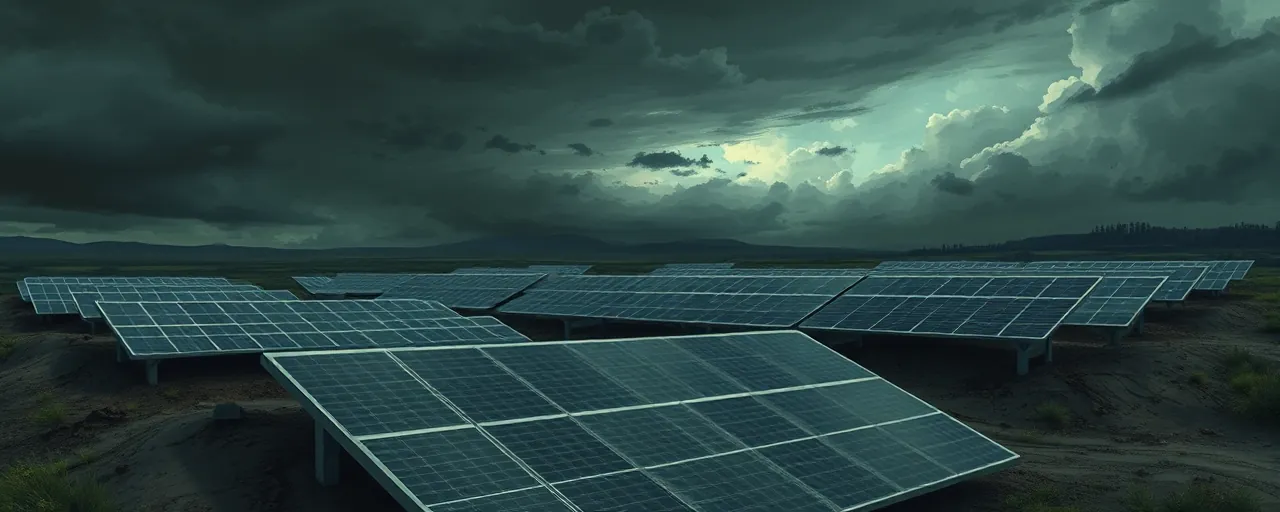A Shiny Promise With Hidden Costs
New York’s latest green energy venture, a 1.5-megawatt solar farm on Albany’s capped North Albany/
The pitch is seductive: transform a useless landfill into a beacon of clean energy. Who wouldn’t cheer for that? Yet the reality is messier. Landfill solar projects, while innovative, come with steep upfront costs and engineering headaches. From stabilizing shaky ground to managing methane leaks, these sites demand specialized designs that inflate budgets. The EPA’s own data shows landfill solar projects often cost 20-30% more per megawatt than traditional solar farms. For Albany’s modest 1.5-megawatt array, that’s a hefty price tag for a city already juggling tight budgets.
Then there’s the New York Power Authority, flexing its newly expanded muscles from the 2023-24 state budget. It’s no secret NYPA’s been handed a blank check to chase renewable dreams, but at what cost? The authority’s Renewables Strategic Plan boasts 37 projects and 3 gigawatts of capacity, but it’s light on how these will impact ratepayers. Albany’s solar farm is just the tip of the iceberg. If NYPA’s track record of cost overruns on projects like the Champlain Hudson Power Express holds true, this could be another expensive misstep dressed up as progress.
What’s worse, the state’s piling on promises it may not keep. The REACH program dangles bill credits for low-income households, but the details are murky. Similar programs elsewhere have delivered paltry savings—sometimes less than $10 a month—while administrative costs eat up the benefits. Albany residents deserve clarity, not vague assurances from bureaucrats banking on future revenue that might never materialize.
The Landfill Mirage: Opportunity or Overpromise?
Landfill solar projects have undeniable appeal. The EPA’s RE-Powering America’s Land Initiative has identified over 190,000 contaminated sites ripe for renewable energy, and landfill solar capacity nationwide hit 2.4 gigawatts by 2022, powering half a million homes. These projects stabilize contaminated land, reduce methane emissions, and generate local revenue. In places like Rhode Island and Connecticut, they’ve turned blighted sites into community assets. Albany’s project could, in theory, follow suit, leveraging existing grid connections and avoiding farmland disputes.
But theory isn’t reality. Landfills are engineering nightmares. Differential settlement can wreck solar arrays, and maintaining cap integrity requires constant vigilance. The Fort Edward Landfill Solar Project, another NYPA venture, faced delays and cost spikes due to unforeseen soil issues. Albany’s site, evaluated by the city’s Office of Sustainability, may look promising on paper, but pre-feasibility studies don’t guarantee smooth sailing. Taxpayers could be left holding the bag if construction hits snags or maintenance costs soar.
And let’s talk about scale. A 1.5-megawatt project is a drop in the bucket compared to New York’s goal of 70% renewable electricity by 2030. NYPA’s Somers Solar, a 20-megawatt project, creates over 100 union jobs and powers thousands of homes. Albany’s effort, by contrast, feels like a symbolic gesture, more about optics than impact. If the state’s serious about clean energy, it should prioritize larger, more cost-effective projects, not scattershot experiments that burden municipalities with risk.
The REACH program adds another layer of skepticism. While it’s noble to aim for energy equity, the program’s reliance on future project revenues raises red flags. Community solar programs in other states have struggled with enrollment and delivered uneven savings. New York’s Energy Affordability Program, which REACH builds on, has been criticized for bureaucratic red tape. If Albany’s solar farm underperforms, those promised bill credits could evaporate, leaving low-income families high and dry.
Bureaucracy Over Local Control
Albany’s solar project isn’t just a local initiative; it’s a cog in NYPA’s sprawling machine. The authority’s expanded powers, granted by the state budget, let it steamroll local priorities under the guise of climate progress. Albany Mayor Kathy Sheehan’s all-in on the project, but her enthusiasm glosses over the loss of municipal autonomy. NYPA’s subsidiary, the New York Renewable Energy Development Holdings Corporation, will construct and control the solar farm. What say will Albany residents have if costs spiral or the project falters?
This top-down approach clashes with the principle of local governance. Cities like Albany should have more skin in the game, not just sign contracts and hope NYPA delivers. The state’s own history shows public authorities can be tone-deaf to community needs. Look at the Robert Moses era: grand projects, big promises, and often bigger problems for locals. NYPA’s Renewables Strategic Plan claims stakeholder input, but public hearings are no substitute for genuine local control.
Opponents of this centralized model aren’t just naysayers. They argue that municipalities, not distant authorities, know their communities best. Albany’s silver Climate Smart Community status is impressive, but it’s a state-driven metric, not a grassroots triumph. If the city’s serious about sustainability, it should demand more decision-making power, not cede it to NYPA’s grand vision. Taxpayers deserve a voice, not a pat on the head from Albany’s elite.
A Smarter Path Forward
New York’s climate goals are ambitious, and landfill solar could play a role. But ambition without accountability is a recipe for waste. Albany’s project needs rigorous cost oversight, transparent revenue projections, and a clear plan to protect taxpayers if things go south. NYPA should prioritize larger, less risky projects that deliver bang for the buck, not boutique initiatives that burn cash for minimal gain.
The REACH program, while well-intentioned, must prove its worth. Low-income families need real savings, not symbolic gestures. NYPA should publish hard numbers on expected bill credits and administrative costs before residents are asked to trust the system. And Albany must claw back some control, ensuring its residents aren’t left paying for NYPA’s missteps. The state’s clean energy future depends on getting these details right, not chasing headlines.
